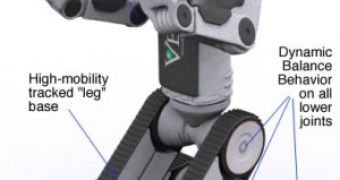Today's robots need to be pre-programmed in order to handle themselves in the field. Unfortunately the technology is not so advanced, yet, to allow them to go by themselves and not get lost or damaged. That's why most robots are guided by humans through cameras and GPS maps.
The next generation of robots could actually learn how to deal with the unknown. They will use educated guesswork to generate maps of their surroundings when these aren't already available.
This could allow them to navigate more easily through complex environments such as unfamiliar buildings.
A team of researchers made of George Lee and colleagues at Purdue University, US, have come up with a new way to teach robots to navigate by themselves. They developed an algorithm that uses information already collected to "guess" what comes next.
"We realized that, because you are building up a map as you go along, you can use it like a database to predict the environment in unknown areas," said Lee. "Once you have that prediction, you can either save time and not look, or explore anyway and get a more accurate map."
The new algorithm can map unexplored regions, known as "frontier cells", in close proximity to areas that have already been mapped, by using the pattern of corners at the edge of this cell to search for similar patterns that have already been mapped. If a match is found, the algorithm uses the existing map to make a prediction of the contents of the frontier cell.
It does come with a price though, since the extra time it takes to analyze existent data and predict the next environment is reflected in the area of covered space. This means that robots using the new algorithm explore 33% less of their environment, but they are able to successfully navigate through unknown ambients.
Lee and colleagues plan to extend the method to multiple robots. "You could have two robots building their own maps," he says, "which then share them when they meet. This will allow a robot to make predictions based on data collected by its teammate."
"In a way it's getting close to the way humans build a map," he adds. "You store background information and can understand new areas that are familiar to old ones."
The new applications work better indoor than outdoor, for now, but they are still a big step towards robots that can learn by themselves, without human intervention.

 14 DAY TRIAL //
14 DAY TRIAL //